Maximizing Crop Yield and Protection with Lida Group’s Climate-Controlled, High-Quality Steel Farm House Systems.
2025-Aug-26 15:04:05
By Admin
1. Introduction
Global agriculture stands at a critical juncture, where the dual pressures of a growing population and increasingly erratic climate patterns are reshaping how crops are grown, stored, and protected. By 2050, the United Nations estimates that global food production must increase by 60% to feed a projected 9.7 billion people. Yet, climate change—marked by rising temperatures, extreme weather events (droughts, floods, heatwaves), and unpredictable rainfall—poses a severe threat to crop productivity. Traditional farming infrastructure, such as wooden or concrete farm houses and open-air storage, is ill-equipped to mitigate these risks: wooden structures rot in high humidity, concrete fails to regulate temperature efficiently, and open storage leaves crops vulnerable to pests, mold, and weather damage.
In response to this crisis, Lida Group—a global leader in innovative steel structure design and agricultural infrastructure—has developed climate-controlled, high-quality steel farm house systems that redefine crop protection and yield optimization. Unlike conventional farm structures, Lida Group’s systems combine the inherent strength and durability of steel with advanced climate-regulation technology, creating controlled environments that shield crops from external stressors while optimizing growing conditions. These systems are not just storage spaces; they are integrated hubs for crop cultivation, post-harvest preservation, and value addition—addressing every stage of the crop lifecycle where yield loss typically occurs.
This article explores how Lida Group’s climate-controlled steel farm house systems maximize crop yield and protection. It begins by examining the climate-related challenges facing modern agriculture, then delves into the core components of Lida Group’s systems: high-performance steel structures, precision climate control technology, and customizable designs tailored to diverse crops. It also presents real-world case studies from different climatic regions, demonstrating how the systems have boosted yields, reduced post-harvest losses, and enhanced crop quality. Additionally, the article highlights the systems’ sustainability, cost-effectiveness, and compliance with global agricultural standards. By the end, it becomes clear why Lida Group’s solution is a game-changer for farmers seeking to adapt to climate change and secure food production for the future.
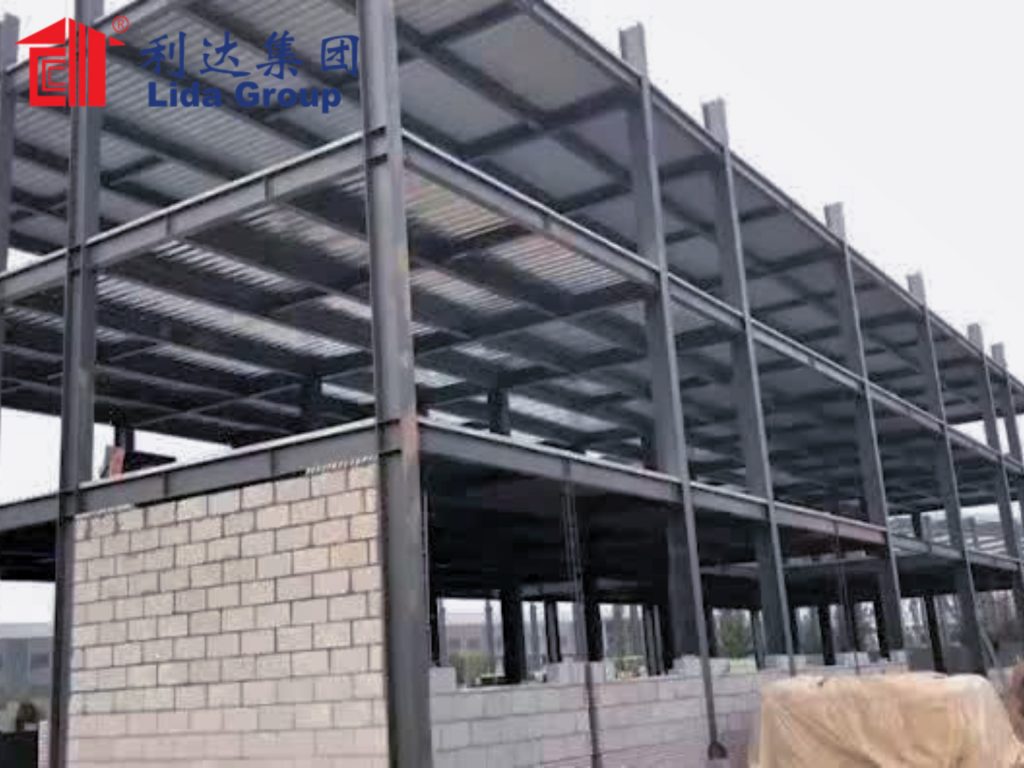
2. The Climate Crisis: Why Crop Yield and Protection Are Under Threat
To understand the value of Lida Group’s climate-controlled systems, it is first essential to quantify the challenges that climate change and inadequate infrastructure pose to crop yield and protection. These challenges manifest in four key ways, each contributing to significant losses for farmers worldwide:
2.1 Extreme Temperature Fluctuations
Crops have narrow temperature ranges for optimal growth—for example, tomatoes thrive at 20–25°C, while wheat prefers 15–20°C. Rising global temperatures and heatwaves (which have increased by 50% since 2000) disrupt these ranges. A 2023 study by the Intergovernmental Panel on Climate Change (IPCC) found that a single week of temperatures above 35°C can reduce crop yields by 10–30% for staple crops like corn and rice. Conversely, unexpected cold snaps—common in regions like Northern Europe and North America—can damage or kill tender crops, such as strawberries or seedlings, leading to total loss of seasonal harvests.
Traditional farm houses offer little protection: wooden structures absorb heat in summer and lose heat rapidly in winter, while concrete buildings trap heat during the day but fail to retain it at night, creating temperature swings that stress crops. Open-air storage or uninsulated sheds exacerbate the problem, exposing harvested crops to temperature extremes that accelerate spoilage.
2.2 Unpredictable Precipitation and Humidity
Climate change has disrupted historical rainfall patterns, leading to more frequent droughts and intense downpours. Droughts parch soil and reduce water availability for irrigation, while heavy rains cause waterlogging, root rot, and soil erosion. Humidity—exacerbated by high temperatures—also poses a threat: excess moisture in storage environments promotes mold growth and insect infestations, which can destroy up to 40% of harvested crops (according to the Food and Agriculture Organization, FAO).
Conventional farm infrastructure struggles to address these issues. Wooden barns absorb moisture, leading to rot and mold, while concrete floors and walls do not regulate humidity, creating damp conditions ideal for pests. Even basic metal sheds lack insulation, allowing humidity to fluctuate with outdoor conditions, putting crops like grains, fruits, and vegetables at risk.
2.3 Pests and Diseases Amplified by Climate Change
Warmer temperatures and increased humidity have expanded the range and activity of crop pests and diseases. For example, the fall armyworm—once limited to the Americas—now infests crops in Africa, Asia, and Europe, destroying up to 70% of corn yields in affected areas. Fungal diseases like powdery mildew and blight spread rapidly in humid conditions, while stored-grain pests like weevils and beetles reproduce faster in warm environments, leading to significant post-harvest losses.
Traditional farm houses offer minimal defense against these threats. Open windows and gaps in wooden structures allow pests to enter easily, while poor ventilation in concrete buildings creates stagnant air that favors disease growth. Chemical pesticides—often used as a last resort—are costly, harmful to the environment, and less effective in unregulated environments where pests can re-infest crops quickly.
2.4 Post-Harvest Losses: A Hidden Crisis
While much attention is paid to in-field yield losses, post-harvest losses—occurring during storage, transportation, and processing—are equally devastating. The FAO estimates that global post-harvest losses for grains range from 10–25%, for fruits and vegetables from 20–50%, and for roots and tubers from 25–50%. These losses are driven by inadequate storage conditions: temperature fluctuations, high humidity, pest infestations, and physical damage from poor handling.
For smallholder farmers—who make up 80% of the world’s agricultural workforce—post-harvest losses are particularly crippling. Without access to proper storage, they are forced to sell crops immediately after harvest (when prices are lowest) or risk losing their entire livelihood to spoilage. Conventional storage solutions, such as wooden crates or uninsulated warehouses, do little to mitigate these risks, trapping farmers in a cycle of low income and food insecurity.
Lida Group’s climate-controlled steel farm house systems address all these challenges, creating stable, protected environments that optimize crop growth and preservation.
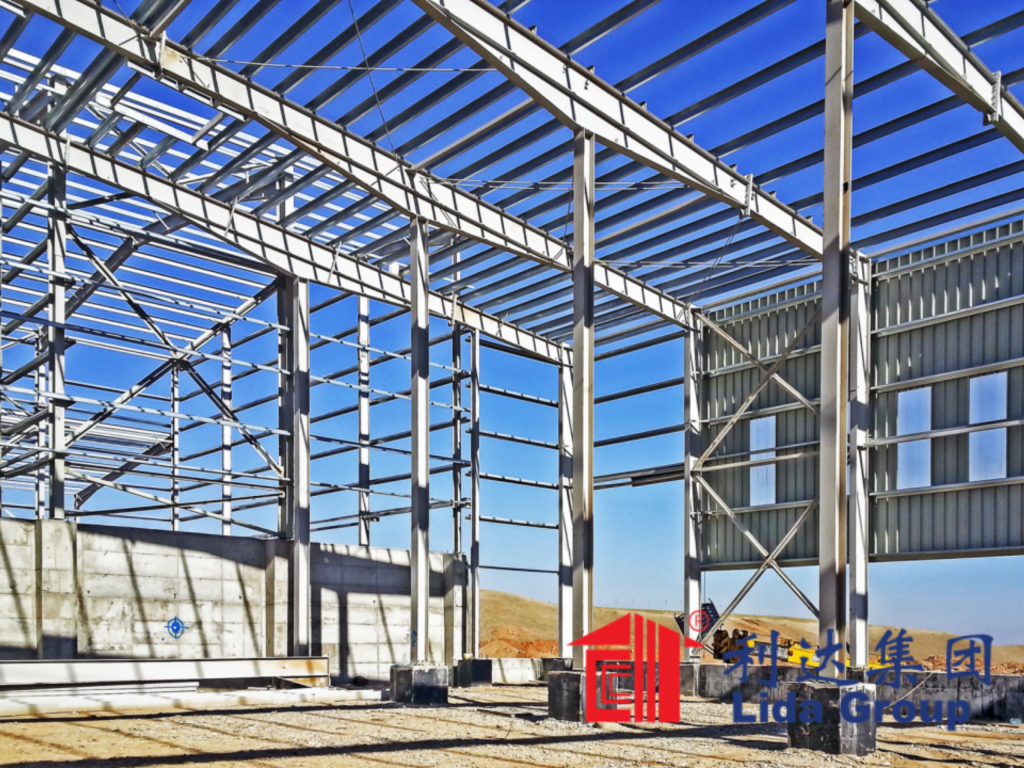
3. Lida Group’s Climate-Controlled Steel Farm House Systems: Core Components
Lida Group’s systems are built on two foundational pillars: high-quality steel structures that ensure durability and resilience, and advanced climate control technology that regulates temperature, humidity, ventilation, and lighting. These components work together to create a holistic solution for crop yield maximization and protection.
3.1 High-Quality Steel Structures: The Foundation of Protection
Lida Group’s farm houses are constructed using premium steel materials and designs that prioritize durability, weather resistance, and structural integrity—essential for withstanding extreme climate conditions and protecting crops long-term.
3.1.1 S355JR Structural Steel: Strength for All Climates
The primary structural material used is S355JR, a high-strength low-alloy (HSLA) steel with a minimum yield strength of 355 MPa. This steel offers exceptional load-bearing capacity, allowing the farm houses to support heavy equipment (such as irrigation systems or overhead lighting) and withstand external pressures like heavy snow (up to 1.5 kN/m²) or strong winds (up to 150 km/h). Unlike wooden or concrete structures, S355JR steel does not warp, crack, or rot, ensuring the farm house remains structurally sound for 50+ years—far longer than the 20–30 year lifespan of conventional farm buildings.
S355JR steel also exhibits excellent ductility, meaning it can bend slightly under stress (e.g., during an earthquake or storm) without collapsing, protecting both the structure and the crops inside. This resilience is critical for farmers in seismic zones (e.g., Japan, California) or hurricane-prone regions (e.g., the Caribbean, Southeast Asia).
3.1.2 Hot-Dip Galvanized Steel: Corrosion Resistance for Humid Environments
To combat corrosion— a major threat in humid, coastal, or agricultural environments (where exposure to fertilizers, pesticides, and moisture is common)—all steel components are treated with hot-dip galvanizing. This process involves submerging steel in molten zinc, which forms a thick, adherent coating that acts as a barrier against moisture, salt, and chemicals. Hot-dip galvanized steel resists rust for 20–50 years, eliminating the need for frequent repainting or repairs that are required for wooden or uncoated metal structures.
For farmers in coastal regions (e.g., Thailand, Brazil) or areas with high humidity (e.g., India, Indonesia), this corrosion resistance is game-changing. It ensures that the farm house’s frame, roof, and walls remain intact, preventing water leaks or structural damage that could ruin stored crops.
3.1.3 Insulated Roof and Wall Panels: Thermal Stability
Lida Group’s farm houses use insulated steel roof and wall panels that are critical for maintaining climate control. These panels consist of three layers:
- Outer layer: 0.8–1.2 mm thick galvanized steel, providing weather resistance.
- Core layer: 50–150 mm thick high-density polyurethane foam insulation, which has an R-value (thermal resistance) of 4–6 per inch—far higher than the R-value of wood (1.2 per inch) or concrete (0.1 per inch).
- Inner layer: Smooth, food-safe steel or aluminum, which is easy to clean and prevents contamination of crops.
The insulation creates a thermal barrier that minimizes heat transfer between the inside and outside of the farm house. In summer, it keeps the interior cool by blocking external heat; in winter, it retains heat generated by heating systems. This thermal stability is essential for maintaining the precise temperature ranges required for crop growth and storage.
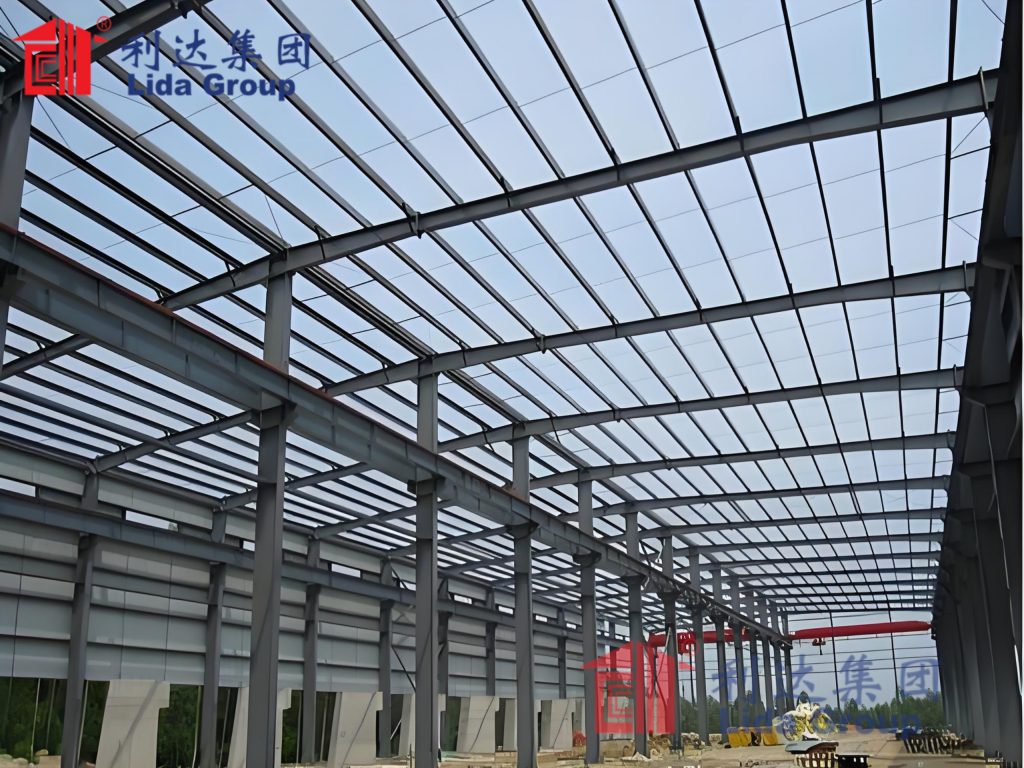
3.2 Advanced Climate Control Technology: Precision for Crop Optimization
The heart of Lida Group’s system is its advanced climate control technology, which uses sensors, automated systems, and energy-efficient equipment to regulate four key environmental factors: temperature, humidity, ventilation, and lighting.
3.2.1 Temperature Regulation: Consistent Ranges for Every Crop
Lida Group’s systems offer precise temperature control, with the ability to maintain ranges from -30°C (for frozen storage of crops like berries or meat) to 35°C (for tropical crops like bananas or mangoes). The technology uses two primary components:
- Heating, Ventilation, and Air Conditioning (HVAC) Units: Energy-efficient HVAC systems tailored to agricultural needs. For cold storage, the units use refrigerants with low global warming potential (GWP), while for warm environments, they include heat pumps that extract heat from the air to warm the interior (reducing energy use by 30% compared to traditional heaters).
- Temperature Sensors and Automated Controls: Wireless IoT (Internet of Things) sensors placed throughout the farm house monitor temperature in real time (every 5 minutes). If the temperature deviates from the set range (e.g., drops below 10°C for tomatoes), the system automatically adjusts the HVAC units to correct it. Farmers can also monitor and control temperatures remotely via a smartphone app, allowing for 24/7 oversight.
This precision is critical for crop health. For example, storing apples at 0–4°C extends their shelf life from 2–3 weeks to 6–8 months, while growing seedlings at 22–25°C accelerates germination and reduces the risk of disease.
3.2.2 Humidity Regulation: Balancing Moisture for Crop Health
Excess humidity leads to mold and rot, while low humidity causes crops to dry out and lose quality. Lida Group’s systems regulate humidity levels between 40–85% using:
- Dehumidifiers: For high-humidity environments (e.g., tropical regions or post-harvest storage of fruits), dehumidifiers remove excess moisture from the air. These units are energy-efficient, using 50% less electricity than conventional models.
- Humidifiers: For dry environments (e.g., deserts or storage of leafy greens), ultrasonic humidifiers add moisture to the air without wetting the crops directly, preventing fungal growth.
- Humidity Sensors: IoT sensors track humidity levels and trigger dehumidifiers or humidifiers as needed. The system also integrates with the HVAC units to circulate air, ensuring even humidity distribution throughout the farm house.
For example, storing lettuce at 90% humidity and 0–2°C maintains its crispness for 3–4 weeks, compared to 1–2 weeks in unregulated storage. Similarly, growing mushrooms— which require 85–90% humidity— in Lida Group’s system increases yield by 20% and reduces disease incidence by 50%.
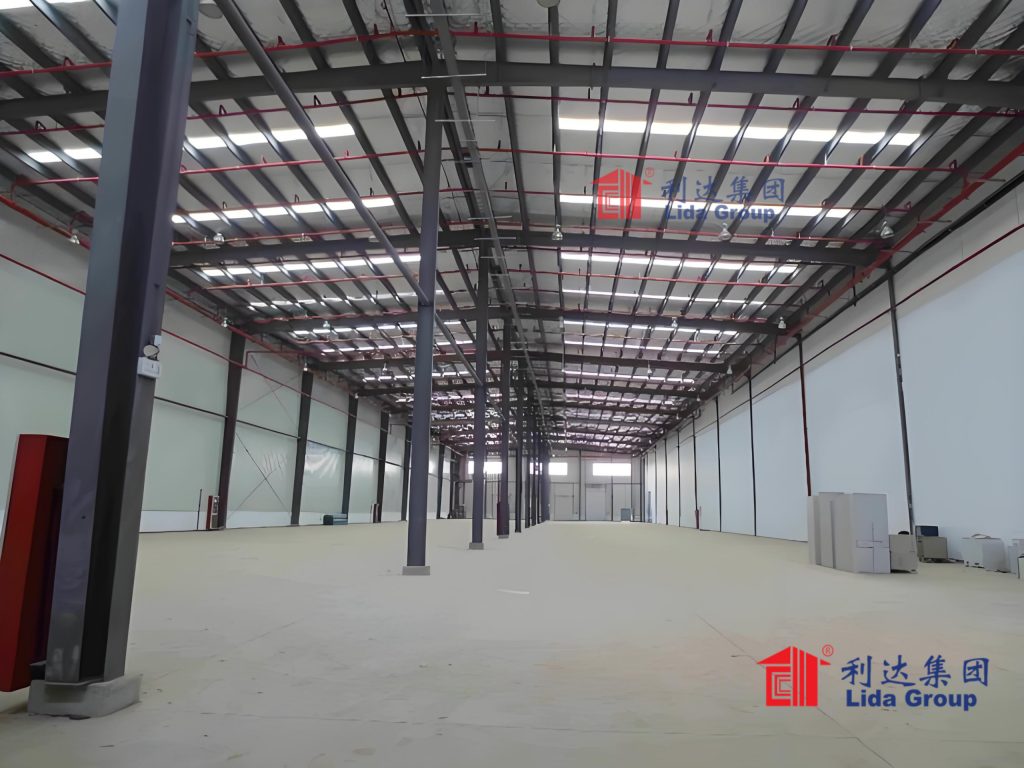
3.2.3 Ventilation: Fresh Air Without Temperature Fluctuations
Proper ventilation is essential for removing ethylene gas (released by ripening fruits, which accelerates spoilage) and providing fresh oxygen for crops. Lida Group’s systems use:
- Automated Ventilation Fans: High-efficiency fans that circulate air at a rate of 10–15 air changes per hour. The fans are connected to sensors that adjust speed based on temperature and humidity— running faster in hot, humid conditions to remove stale air.
- Heat Recovery Ventilators (HRVs): For cold storage or heated environments, HRVs exchange heat between incoming fresh air and outgoing stale air, reducing energy loss by 70%. This ensures that fresh air is introduced without causing temperature spikes or drops.
Ventilation is particularly important for stored grains. A 2022 study found that proper air circulation in grain storage reduces mold growth by 80% and insect infestations by 90%, leading to a 15–20% reduction in post-harvest losses.
3.2.4 Lighting Control: Optimizing Photosynthesis for Indoor Cultivation
For farmers using the farm house for indoor cultivation (e.g., seedlings, hydroponic vegetables, or medicinal herbs), Lida Group’s systems include advanced lighting control:
- LED Grow Lights: Energy-efficient LED lights that emit the specific wavelengths of light (red and blue) needed for photosynthesis. These lights use 50% less energy than traditional fluorescent lights and have a lifespan of 50,000 hours (compared to 10,000 hours for fluorescents).
- Lighting Timers and Sensors: The system can program lighting schedules (e.g., 16 hours of light, 8 hours of dark for leafy greens) and adjust intensity based on crop growth stages. For example, seedlings require higher light intensity than mature plants, and the system automatically reduces intensity as crops grow.
Indoor cultivation in Lida Group’s farm houses allows farmers to grow crops year-round, regardless of outdoor weather. For example, a farmer in Canada using LED grow lights can produce three crops of lettuce per year instead of one, tripling yield.

4. Customization: Tailoring Systems to Diverse Crops and Climates
One of the key strengths of Lida Group’s climate-controlled steel farm house systems is their customization. Every farm and crop has unique needs— a system designed for storing wheat in Canada will differ significantly from one for growing mangoes in Thailand. Lida Group’s engineering team works closely with farmers to design systems that align with their specific crops, climatic conditions, and operational goals.
4.1 Crop-Specific Designs
Lida Group offers three core system types, each tailored to a different crop category:
4.1.1 Grain Storage Systems
Grains (wheat, corn, rice, barley) require low humidity (40–60%) and cool temperatures (10–15°C) to prevent mold and insect infestations. Lida Group’s grain storage systems include:
- Airtight storage bins: Modular steel bins with capacities ranging from 50 to 5,000 tons, designed to prevent pest entry and moisture infiltration.
- Grain aeration systems: Fans that blow cool, dry air through the grain to maintain uniform moisture levels and prevent hot spots (which cause spoilage).
- Grain monitoring sensors: Sensors embedded in the bins that track moisture, temperature, and grain level, alerting farmers to potential issues (e.g., a hot spot indicating mold growth).
For example, a farmer in Ukraine storing 1,000 tons of wheat in Lida Group’s system reported a 95% reduction in mold growth and a 10% increase in grain quality (measured by protein content) compared to traditional wooden silos.
4.1.2 Fruit and Vegetable Storage Systems
Fruits and vegetables have diverse requirements: apples need 0–4°C and 90% humidity, while tomatoes need 12–15°C and 85% humidity. Lida Group’s systems for these crops include:
- Partitioned storage zones: Separate areas within the farm house with independent climate control, allowing farmers to store multiple crops simultaneously.
- Ethylene scrubbers: For fruits that release high levels of ethylene (e.g., apples, bananas), scrubbers remove the gas to prevent premature ripening of other crops (e.g., lettuce, carrots) stored nearby.
- Gentle handling equipment: Conveyor belts and sorting tables with soft surfaces to prevent bruising, which is a major cause of post-harvest loss for delicate fruits like peaches or strawberries.
A strawberry farmer in Spain using Lida Group’s system reported a 40% reduction in post-harvest losses, as the controlled environment extended the strawberries’ shelf life from 3 days to 10 days.
4.1.3 Indoor Cultivation Systems
For farmers growing crops indoors (seedlings, hydroponics, herbs), Lida Group’s systems include:
- Adjustable growing beds: Raised beds that can be height-adjusted to maximize vertical space, increasing growing area by 50%.
- Hydroponic or aquaponic integration: Pre-installed channels and pumps for hydroponic (water-based) or aquaponic (fish and plant co-culture) systems, which use 90% less water than traditional soil farming.
- CO₂ enrichment systems: For high-yield crops like tomatoes or cucumbers, CO₂ generators increase carbon dioxide levels in the air (from 400 ppm to 1,000 ppm), boosting photosynthesis and yield by 20–30%.
A hydroponic lettuce farmer in Singapore using Lida Group’s system produces 10,000 heads of lettuce per month— double the yield of their previous unregulated indoor setup.
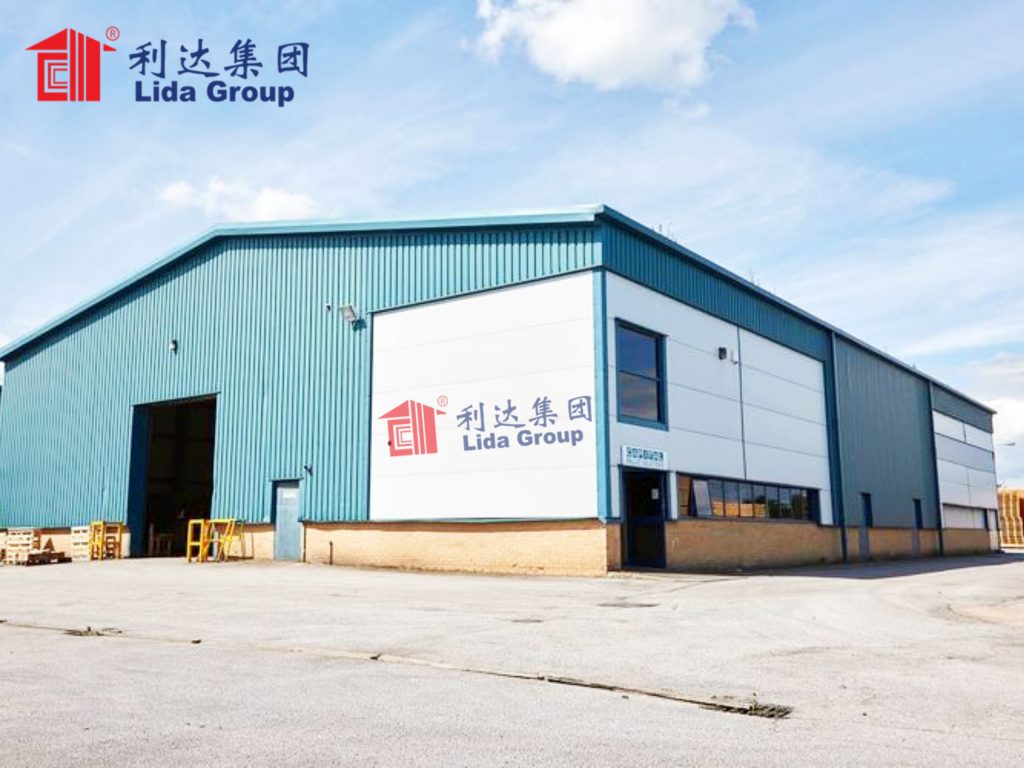
4.2 Climate-Specific Adaptations
Lida Group also adapts systems to local climatic conditions, ensuring optimal performance even in extreme environments:
4.2.1 Hot and Humid Regions (e.g., Southeast Asia, Brazil)
In these regions, the primary challenges are high temperatures, humidity, and heavy rainfall. Lida Group’s adaptations include:
- Enhanced insulation: 150 mm thick polyurethane foam insulation (compared to 100 mm in temperate regions) to block external heat.
- Rainwater harvesting: Steel roofs designed to collect rainwater, which is stored in tanks and used for irrigation or humidification— reducing reliance on municipal water.
- Insect screens: Fine mesh screens on vents and windows to prevent entry of pests like fruit flies or armyworms, which are prevalent in tropical regions.
A mango farmer in Thailand using Lida Group’s system reported that storing mangoes at 13°C and 85% humidity extended their shelf life from 7 days to 30 days, allowing them to export to Europe and increase revenue by 50%.
4.2.2 Cold and Snowy Regions (e.g., Canada, Northern Europe)
In cold regions, the main challenges are low temperatures, heavy snow, and short growing seasons. Lida Group’s adaptations include:
- Snow-resistant roofs: Steel roofs with a steep slope (30–40 degrees) to facilitate snow runoff and reinforced trusses to support snow loads of up to 2 kN/m².
- Heated floors: Electric or hydronic floor heating systems to prevent freezing of stored crops (e.g., potatoes, carrots) and to provide warmth for indoor cultivation.
- Solar panel integration: Steel roofs designed to support solar panels, which generate electricity to power heating systems— reducing energy costs by 40%.
A potato farmer in Canada using Lida Group’s system stores 500 tons of potatoes at 4°C, with zero freezing damage and a 15% reduction in energy costs compared to their previous concrete warehouse.
4.2.3 Dry and Arid Regions (e.g., Australia, the Middle East)
In dry regions, water scarcity and high temperatures are the main challenges. Lida Group’s adaptations include:
- Water-efficient humidifiers: Ultrasonic humidifiers that use 70% less water than traditional models.
- Shade structures: Extended steel awnings over windows and doors to block direct sunlight, reducing heat gain by 30%.
- Greywater recycling: Systems that collect and filter wastewater from humidifiers or cleaning, which is then reused for irrigation— saving up to 10,000 liters of water per month.
A date farmer in the Middle East using Lida Group’s system stores dates at 20°C and 60% humidity, reducing moisture loss by 25% and maintaining the dates’ sweetness and texture for 6 months.
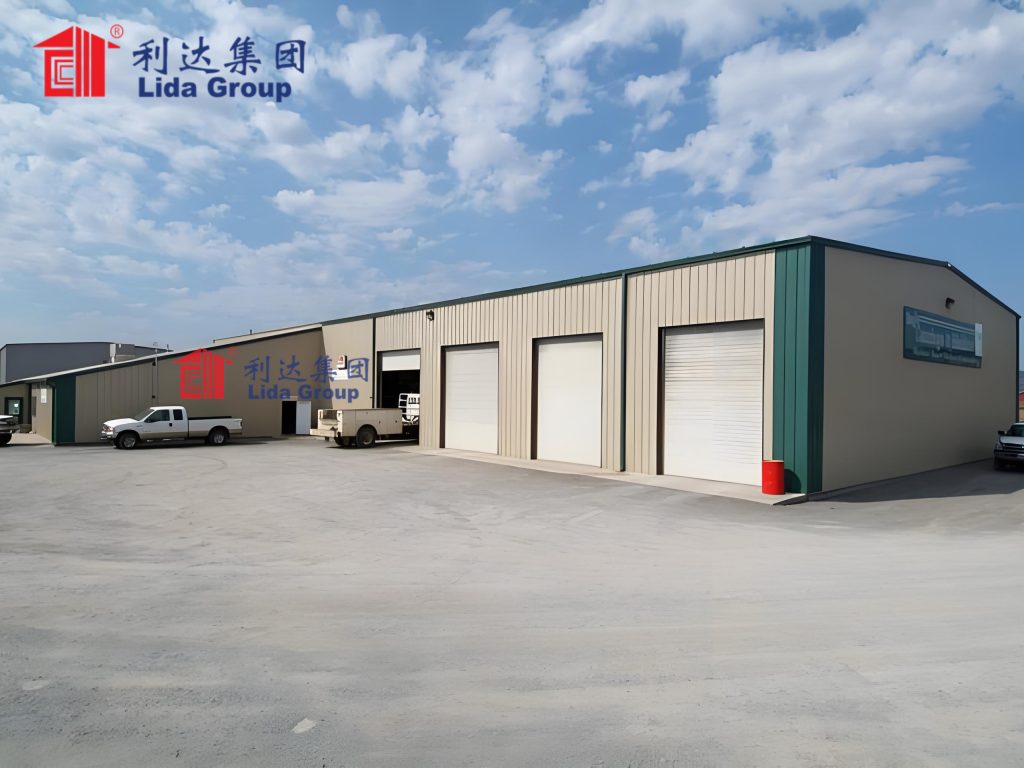
5. Case Studies: Real-World Impact on Crop Yield and Protection
To illustrate the effectiveness of Lida Group’s climate-controlled steel farm house systems, this section examines three case studies from different regions and crop types. Each case study highlights the challenges faced by farmers, the customized solution provided by Lida Group, and the measurable results in terms of yield improvement and loss reduction.
5.1 Case Study 1: Rice Storage in Vietnam
Vietnam is one of the world’s largest rice exporters, but smallholder rice farmers face significant post-harvest losses due to high humidity (average 85%) and insect infestations. A cooperative of 50 smallholder farmers in the Mekong Delta needed a solution to store 500 tons of rice, reduce losses, and maintain quality for export.
Challenges:
- Traditional storage in wooden silos led to 15–20% post-harvest losses due to mold and weevil infestations.
- High humidity caused rice to absorb moisture, reducing its quality and market value.
- The cooperative needed a cost-effective system that could be easily maintained by farmers with limited technical expertise.
Lida Group’s Solution:
Lida Group designed a 500-square-meter climate-controlled steel farm house with:
- Modular steel storage bins: Five 100-ton bins with airtight seals and hot-dip galvanized steel to resist corrosion.
- Climate control system: Dehumidifiers to maintain 50% humidity and HVAC units to keep temperatures at 12°C.
- Grain monitoring sensors: IoT sensors in each bin to track moisture, temperature, and insect activity, with alerts sent to farmers’ smartphones.
- Simple user interface: A touchscreen control panel with local language support, making it easy for farmers to operate the system.
Results:
- Post-harvest losses reduced to 3%: The climate-controlled environment eliminated mold growth and weevil infestations, saving the cooperative 70–85 tons of rice per year.
- Increased market value: The rice maintained its moisture content (14–15%, ideal for export) and quality, allowing the cooperative to sell at a 10% premium to international buyers.
- Cost savings: The system reduced the need for chemical pesticides and fumigants, cutting input costs by $2,000 per year.
The cooperative’s leader noted: “Before, we lost almost a fifth of our rice every year—money we couldn’t afford to lose. Now, we store our rice safely, sell for a better price, and can plan for the future. The system is easy to use, and we haven’t had any problems with corrosion or breakdowns.”
5.2 Case Study 2: Tomato Cultivation in Kenya
Kenya’s horticulture sector is a key driver of the economy, but tomato farmers face challenges from extreme heat (temperatures up to 35°C) and unpredictable rainfall, which reduce yields and damage crops. A commercial tomato farmer in Nakuru County wanted to expand indoor cultivation of cherry tomatoes to meet growing demand from local supermarkets and hotels.
Challenges:
- Outdoor cultivation yielded 10 tons per acre per season, with 30% loss due to heat stress and pests.
- The farmer needed a system to grow tomatoes year-round, regardless of weather conditions.
- Energy costs for climate control were a concern, as Kenya’s electricity prices are relatively high.
Lida Group’s Solution:
Lida Group delivered a 300-square-meter indoor cultivation farm house with:
- Steel frame with enhanced insulation: 150 mm thick polyurethane foam insulation to block external heat, reducing cooling needs.
- Climate control system: HVAC units with heat pumps to maintain 22–25°C and 80% humidity, and CO₂ enrichment to boost photosynthesis.
- LED grow lights: Energy-efficient LED lights with a 16/8 hour light/dark cycle, powered by a 10 kW solar panel array on the steel roof.
- Hydroponic system: Pre-installed nutrient film technique (NFT) hydroponic channels, using 90% less water than soil farming.
Results:
- Yield increased to 35 tons per acre per season: Indoor cultivation with optimal climate and CO₂ enrichment tripled yield compared to outdoor farming.
- Year-round production: The system allowed the farmer to harvest tomatoes 3 times per year (instead of 1), increasing total annual yield to 105 tons per acre.
- Energy self-sufficiency: The solar panel array generated enough electricity to power the climate control system and LED lights, eliminating monthly electricity bills of $500.
The farmer reported: “We used to worry about droughts and heat killing our tomatoes. Now, we grow them all year, and the quality is better—supermarkets are willing to pay more. The solar panels mean we don’t have to stress about electricity costs, which is a huge relief.”
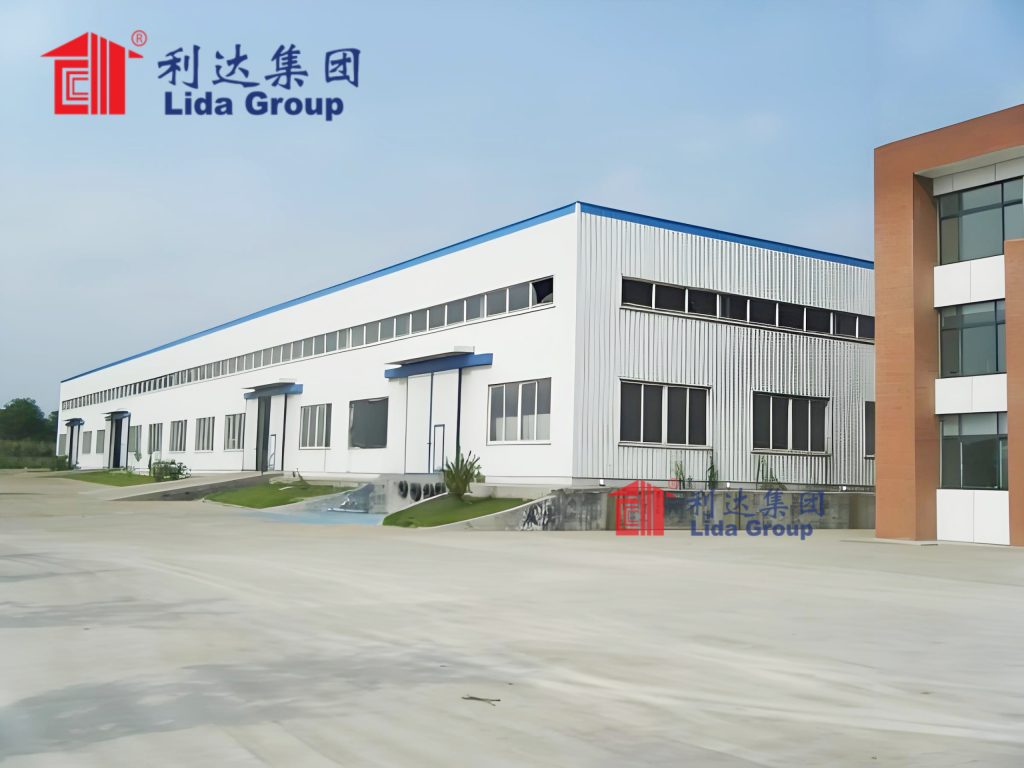
5.3 Case Study 3: Apple Storage in Poland
Poland is Europe’s largest apple producer, but apple farmers face challenges from cold winters (temperatures as low as -20°C) and post-harvest losses during long storage periods. A large-scale apple orchard in Mazovia needed a system to store 1,000 tons of apples for 8 months, maintain crispness and flavor, and reduce energy costs.
Challenges:
- Traditional concrete warehouses led to 10% losses due to freezing damage and ethylene-induced ripening.
- High heating costs in winter made long-term storage economically unviable.
- The orchard needed to store multiple apple varieties (Gala, Fuji, Golden Delicious) with different temperature requirements.
Lida Group’s Solution:
Lida Group designed a 1,000-square-meter climate-controlled steel farm house with:
- Partitioned storage zones: Three zones with independent climate control—0°C for Gala apples, 2°C for Fuji, and 1°C for Golden Delicious.
- Energy-efficient climate control: HRVs to recover heat from outgoing air, reducing heating needs by 70%, and ethylene scrubbers to prevent cross-ripening between varieties.
- Snow-resistant roof: Reinforced steel roof with a 35-degree slope and snow-melting system on the edges to prevent ice buildup.
- Flooring insulation: 100 mm thick insulation under the concrete floor to prevent freezing and root rot in stored apples.
Results:
- Losses reduced to 2%: The partitioned zones and ethylene scrubbers maintained apple quality, saving the orchard 80 tons of apples per year.
- Energy costs cut by 40%: The HRVs and insulation reduced winter heating costs from \(12,000 to \)7,200 per season.
- Extended shelf life: The apples remained crisp and flavorful for 8 months, allowing the orchard to sell during off-seasons when prices are 2–3 times higher.
The orchard manager stated: “Before, we had to sell most of our apples immediately after harvest, when prices are low. Now, we can store them and sell when demand is high. The system is durable—we had a heavy snowstorm last winter, and the roof held up perfectly. We haven’t had any freezing damage, which is a huge win.”
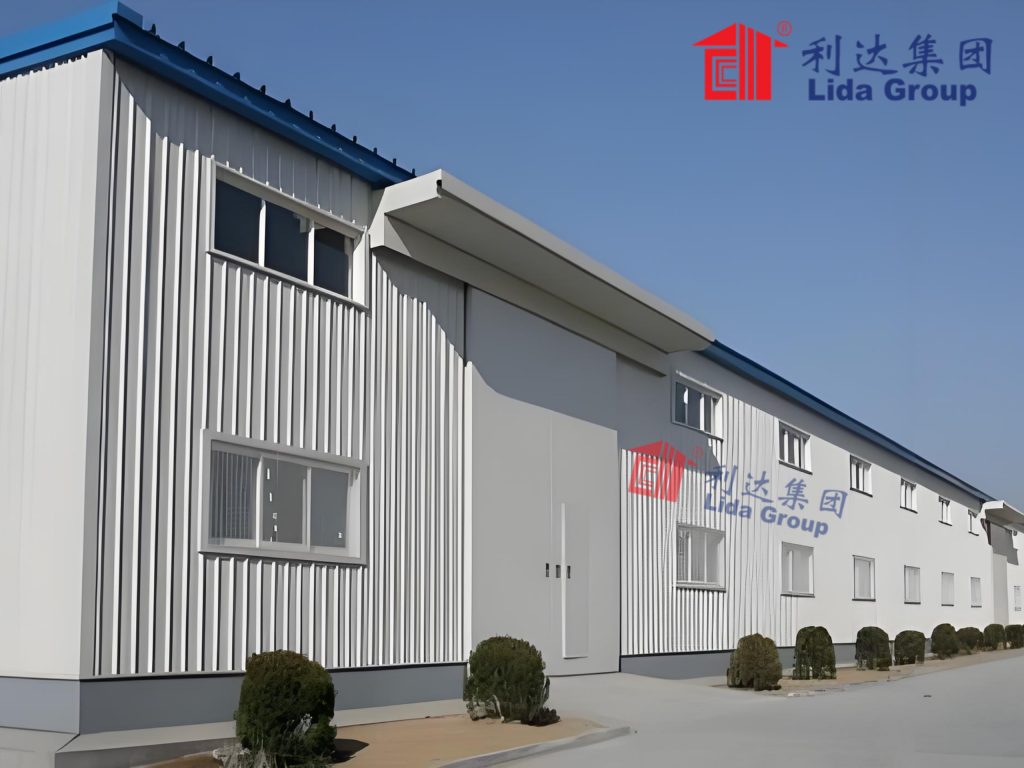
6. Sustainability and Cost-Effectiveness: Long-Term Value for Farmers
Lida Group’s climate-controlled steel farm house systems not only maximize crop yield and protection but also deliver long-term sustainability and cost-effectiveness—critical factors for farmers seeking to invest in resilient infrastructure.
6.1 Sustainability: Reducing Environmental Impact
Sustainability is integrated into every aspect of Lida Group’s systems, aligning with global efforts to reduce agriculture’s carbon footprint:
6.1.1 Energy Efficiency
- Energy-efficient climate control: HVAC units, dehumidifiers, and LED lights use 30–50% less energy than conventional equipment. For example, the heat pumps in Lida Group’s systems have a coefficient of performance (COP) of 4–5, meaning they produce 4–5 units of heat for every 1 unit of electricity used.
- Renewable energy integration: Steel roofs are designed to support solar panels, and the systems can be connected to wind turbines or biogas generators. A typical 500-square-meter farm house with solar panels can generate 80–100% of its electricity needs, reducing reliance on fossil fuels.
- Smart energy management: The IoT system optimizes energy use by adjusting climate control based on crop needs and external conditions. For example, it reduces HVAC activity during cooler nights, cutting energy consumption by 15–20%.
6.1.2 Water Conservation
- Efficient humidification: Ultrasonic humidifiers use 70% less water than traditional evaporative humidifiers.
- Rainwater harvesting: Steel roofs collect rainwater, which is stored and used for irrigation or humidification. A 1,000-square-meter roof can collect 10,000–15,000 liters of rainwater per year in moderate rainfall regions.
- Greywater recycling: Wastewater from humidifiers or cleaning is filtered and reused, reducing freshwater consumption by 20–30%.
6.1.3 Reduced Chemical Use
By controlling pests and diseases through climate regulation, Lida Group’s systems reduce the need for chemical pesticides and fumigants. This not only lowers farmers’ input costs but also reduces soil and water pollution, protecting biodiversity and human health. For example, the rice cooperative in Vietnam eliminated the use of methyl bromide (a toxic fumigant) after installing Lida Group’s system.
6.1.4 Recyclable Materials
The steel used in Lida Group’s farm houses is 70–80% recycled, and the entire structure is 100% recyclable at the end of its lifespan. This reduces the demand for virgin steel production, which is energy-intensive and emits large amounts of carbon dioxide. Additionally, the insulation and other materials are chosen for their recyclability or biodegradability.
6.2 Cost-Effectiveness: Short-Term Investment, Long-Term Returns
While Lida Group’s systems require a higher initial investment than conventional farm houses, they deliver significant long-term cost savings and returns:
6.2.1 Low Maintenance Costs
- Durable steel structure: Hot-dip galvanized steel requires no repainting or repairs for 20–30 years, unlike wooden structures (which need annual painting) or concrete (which cracks and requires patching).
- Reliable climate control equipment: Lida Group uses high-quality, industrial-grade components with a 5–10 year warranty, reducing the need for frequent replacements.
- Predictive maintenance: The IoT system monitors equipment performance and alerts farmers to potential issues (e.g., a failing fan) before they become major problems, reducing repair costs by 40%.
6.2.2 Increased Revenue from Higher Yields and Quality
- Yield improvement: Indoor cultivation or protected storage increases yields by 20–100%, depending on the crop. For example, the tomato farmer in Kenya tripled yield, leading to a 200% increase in revenue.
- Premium pricing: High-quality crops (with consistent moisture, no mold, and good texture) command 10–50% higher prices in local and international markets.
- Extended selling season: Storing crops allows farmers to sell during off-seasons when prices are higher. The apple orchard in Poland increased revenue by 150% by selling apples in winter and spring.
6.2.3 Payback Period
The average payback period for Lida Group’s systems is 3–5 years, depending on the crop and region. For high-value crops like tomatoes or fruits, the payback period can be as short as 2 years. After that, farmers enjoy significant net savings and increased profits.
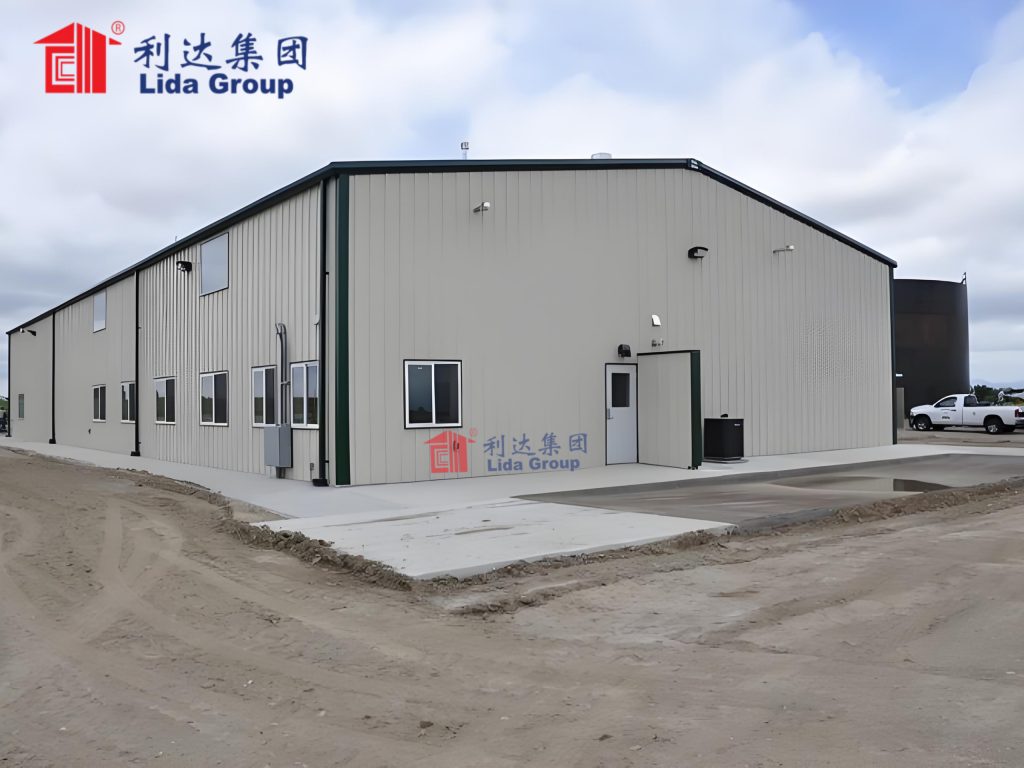
7. Future Innovations: Advancing Crop Yield and Protection
Lida Group is committed to continuous innovation, investing in research and development (R&D) to enhance the performance of its climate-controlled steel farm house systems. The company’s R&D team is focused on three key areas to further maximize crop yield and protection:
7.1 AI-Powered Climate Optimization
Lida Group is integrating artificial intelligence (AI) into its climate control systems to create “self-learning” environments that adapt to crop needs in real time. The AI system will:
- Analyze crop data: Use machine learning algorithms to process data on crop growth stages, health, and yield, and adjust climate parameters (temperature, humidity, CO₂ levels) to optimize growth.
- Predict weather impacts: Integrate with local weather forecasts to pre-adjust the climate control system—for example, increasing insulation before a cold snap or reducing humidity before a rainstorm.
- Optimize energy use: Balance crop needs with energy efficiency, reducing costs while maintaining optimal conditions.
Early trials of the AI system with lettuce farmers in the Netherlands showed a 15% increase in yield and a 20% reduction in energy use compared to manual control.
7.2 Advanced Pest Detection and Prevention
Lida Group is developing a “smart pest management system” that combines IoT sensors, computer vision, and biological controls to prevent pest infestations:
- Insect sensors: Tiny sensors that detect the presence of pests (e.g., weevils, fruit flies) by tracking their movement or pheromones.
- Computer vision cameras: Cameras that monitor crops for signs of pest damage (e.g., leaf holes, discoloration) and alert farmers in real time.
- Biological control integration: The system can trigger the release of beneficial insects (e.g., ladybugs to control aphids) or pheromone traps, eliminating the need for chemical pesticides.
This system is currently being tested with strawberry farmers in California, with early results showing a 90% reduction in pest-related losses.
7.3 Vertical Farming Integration
To address land scarcity— a growing issue in urban and densely populated regions—Lida Group is designing climate-controlled steel farm houses for vertical farming. These systems will:
- Modular vertical growing racks: Steel racks that can be stacked 5–10 levels high, increasing growing area by 5–10 times compared to traditional indoor farming.
- Automated nutrient delivery: Robotic systems that deliver water and nutrients to each level, ensuring uniform growth.
- AI-controlled lighting: LED lights that adjust wavelength and intensity for each crop and growth stage, maximizing photosynthesis.
A prototype vertical farm house in Singapore is currently producing 500 kg of leafy greens per month in a 50-square-meter space—10 times the yield of traditional soil farming.

8. Conclusion
In conclusion, Lida Group’s climate-controlled, high-quality steel farm house systems are a transformative solution for modern agriculture, addressing the dual challenges of climate change and inadequate infrastructure to maximize crop yield and protection. By combining the durability and resilience of premium steel with advanced climate control technology, these systems create stable, optimized environments that shield crops from extreme temperatures, humidity, pests, and diseases—while reducing post-harvest losses and enhancing crop quality.
The customization of these systems to diverse crops and climates—from rice storage in Vietnam to tomato cultivation in Kenya—ensures their relevance and effectiveness worldwide. Real-world case studies demonstrate measurable results: post-harvest losses reduced from 15–20% to 3%, yields tripled, and revenue increased by 50–200%. Additionally, the systems’ sustainability features—energy efficiency, water conservation, and recyclable materials—align with global efforts to build a more sustainable food system, while their cost-effectiveness delivers long-term returns for farmers.
Lida Group’s ongoing innovations—AI-powered climate optimization, advanced pest management, and vertical farming integration—promise to further enhance the systems’ impact, enabling farmers to adapt to future climate challenges and meet the growing demand for food. For smallholder farmers, commercial growers, and agricultural cooperatives alike, these systems are not just an investment in infrastructure—they are an investment in food security, economic stability, and a sustainable future.
In a world where climate change continues to threaten crop production, Lida Group’s climate-controlled steel farm house systems offer a beacon of hope. They prove that with the right technology and infrastructure, farmers can overcome environmental challenges, maximize their yields, and contribute to a more food-secure planet. For anyone committed to advancing modern, resilient agriculture, Lida Group’s solution is the gold standard—delivering protection, productivity, and prosperity for farmers and communities worldwide.

Related news
-
Lida Group's Advanced Steel Frame Building Technology Ensures Rapid Construction of Spacious Steel Structure Warehouses
2025-08-26 14:21:47
-
Sustainable Farming Future: Lida Group Delivers Eco-Friendly, High-Quality Steel Farm Houses Using Recycled Materials
2025-08-26 13:27:39
-
Why Global Logistics Firms Prefer Lida Group's High-Quality Steel Warehouses for Their Strength and Customizability.
2025-08-26 13:16:50
contact us
- Tel: +86-532-88966982
- Whatsapp: +86-13793209022
- E-mail: sales@lidajituan.com


